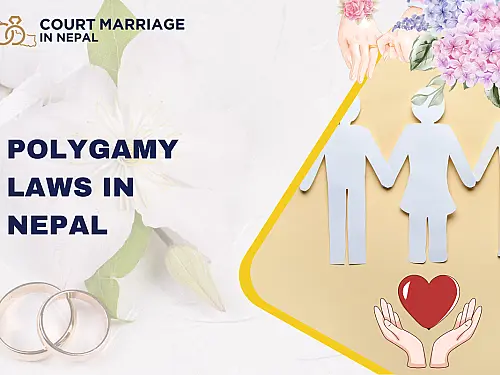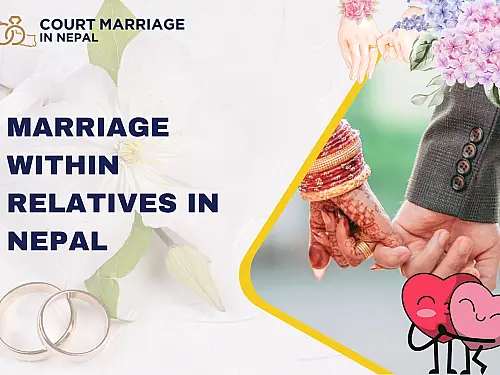Table of Contents
Nepal’s marriage system is a deeply rooted social framework that showcases the nation’s vibrant cultural variety and enduring customs. It is not only a bond between two people, but a blend of two families and their social environments. Marriage holds importance that extends beyond individual dedication, encompassing powerful social, emotional, and symbolic implications.
In Nepal, marriage is traditionally viewed as a holy connection that guarantees the perpetuation of lineage and the safeguarding of familial honor and social order. It is frequently viewed as a lifelong obligation, where responsibility, honor, and shared duties carry significant weight. In numerous communities, marriage is seen as a societal duty instead of merely a personal decision, and it is essential for sustaining the social structure of society.
In Nepal, the concept of marriage is significantly shaped by cultural values like reverence for elders, engagement of family, and involvement of the community. Families and even entire communities often participate in marriage decisions, which strengthens collective identity and social unity. Likewise, marriage acts as a method to reinforce bonds among families, clans, or ethnic communities, frequently bearing considerable social and economic consequences.
Furthermore, marriage is profoundly connected to gender roles and societal expectations. Historically, there has been a distinct separation of roles, with men viewed as providers and defenders, while women are anticipated to oversee the home and care for children. These roles, while progressively changing, still impact marital relationships and the wider societal perceptions of partners.
Although contemporary influences and evolving perspectives have started to alter certain conventions—particularly in cities—the fundamental principles of respect, family togetherness, and social duty remain central to the essence of marriage in Nepal. Marriage continues to be a significant milestone that signifies the shift into adulthood, embraces societal duties, and represents the acknowledgment of common roles within a family and community setting.
Types of Marriage in Nepal
Arranged Marriage
In Nepal, arranged marriage continues to be the most common type of marriage, particularly among traditional and rural families. In this system, parents or older family members take the initiative in choosing a life partner for their child. The decision is generally influenced by elements like caste, ethnicity, religion, economic status, education level, family standing, and astrological alignment.
Traditionally, the bride and groom had minimal influence over the choice, but contemporary arranged marriages now place greater importance on the agreement of both individuals. Nowadays, young individuals can connect and engage with one another prior to making a final decision, and numerous arranged marriages now feature aspects of choice and discussions about compatibility.
Love Marriage
Love marriage signifies a union in which people select their partner driven by shared feelings, emotional connection, or romantic attraction. This kind of marriage is more prevalent in city environments and among younger, better-educated generations. Love marriages confront conventional expectations and can encounter opposition from families, particularly when there are differences in caste, religion, or financial status.
At times, love marriages are subsequently validated through court or religious rituals, based on family expectations and cultural standards.
Court Marriage
Court marriage is an officially acknowledged type of marriage held at the District Court. This process is not influenced by religious or cultural customs and primarily concentrates on meeting the legal obligations established by Nepali law.
It is favored by couples from different castes or nationalities and those seeking official documentation for visa or citizenship purposes. The procedure involves submitting legal documents, a court hearing, and formal registration.
Elopement Marriage
Elopement marriage (bhagi bibaha) is a union where a couple marries without parental consent due to social restrictions like caste barriers or family opposition. While it may cause community conflict and be socially sensitive, it is legally valid in Nepal if both partners meet the legal criteria for marriage.
Polygamy and Polyandry
Polygamy
Historically practiced, especially among elites, polygamy (one man with multiple wives) is now illegal in Nepal. The Muluki Civil Code prohibits it, and violators face legal consequences. Despite the law, it still exists in some rural areas without legal recognition.
Polyandry
Polyandry (one woman with multiple husbands), often among brothers, is rare and found in some Himalayan regions. Done mostly for economic reasons, it is not legally recognized and is declining with social modernization.
Legal Framework and Requirements
Marriage in Nepal is governed by the National Civil Code, 2017 (Muluki Civil Code). It requires:
Consent: Both parties must agree voluntarily.
Age: Minimum 20 years for both, regardless of parental consent.
Monogamy: Only one legal marriage at a time.
No close kinship: Marriages between close blood relatives are prohibited.
Registration: Mandatory for legal recognition.
Where to Register:
District Court: For court and legal validations.
Local Ward Office: For traditional/religious ceremonies.
Nepali Embassies/Consulates: For citizens abroad or foreigners marrying in Nepal.
Prohibited Marriages:
Child Marriage: Illegal below 20 years.
Bigamy: Criminal offense.
Close Kinship: Strictly forbidden to prevent incest and preserve norms.
Social and Cultural Aspects
Family Involvement
Marriage is a family-centered institution. Even today, family acceptance remains critical in arranged marriages, where social compatibility is highly valued.
Changing Trends
Urbanization, education, and global influences are shifting perspectives:
Rise in love marriages
Increased individual choice
Use of digital platforms
Delayed marriages
These reflect a shift from collective to individual decision-making.
Divorce
Legally permitted under the National Civil Code, 2017, divorce can be sought on grounds like cruelty, desertion, or incompatibility. Women often face stigma, although legal reforms support equitable property rights and child custody.
Summary Table: Key Features of Marriage System in Nepal
| Aspect | Traditional Practice | Modern/Legal Practice |
|---|---|---|
| Main Types | Arranged, religious | Love, court, elopement |
| Legal Age | 20 years (both partners) | 20 years (both partners) |
| Consent | Family-driven, now mutual | Mutual consent required |
| Registration | Not always formal | Mandatory for legal recognition |
| Polygamy/Polyandry | Historically present | Polygamy illegal; polyandry rare |
| Dowry | Common, but illegal | Illegal, but persists |
| Divorce | Rare, stigmatized | Legally possible, still stigmatized |
Conclusion
Nepal's marriage system reflects a fusion of age-old traditions and progressive reforms. While arranged marriages, cultural rituals, and family roles dominate in rural regions, there is growing emphasis on legal rights, gender equality, and personal autonomy in urban areas.
The legal framework supports mutual consent, prohibits harmful practices, and protects personal freedoms. Marriage in Nepal today represents both continuity and change—an evolving social contract shaped by tradition and modernity alike.






-thumb.webp)